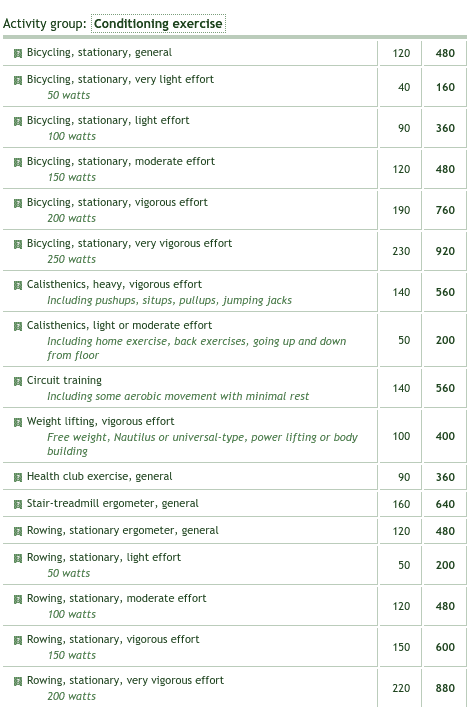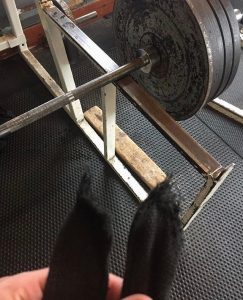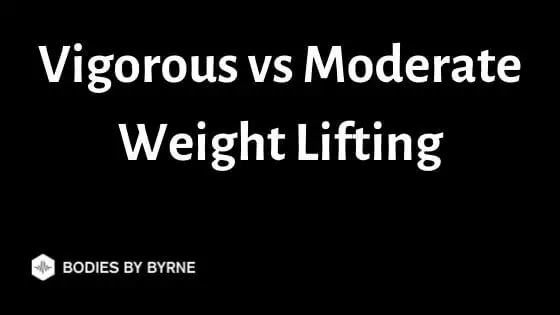When it comes to workout intensity, especially regarding weightlifting, then there are a few brackets that you can come under. Each one will have different terminology and it’s usually the typical scale is low, moderate and high intensity.
I’ve actually seen it become quite common to use different terms now and vigorous seems to have replaced ‘high’ in a lot of informational sources when it comes to weight lifting. High intensity interval training (HIIT) has long been a concept for weight lifting but I suspect that the popularity of HIIT style cardio training has led to some confusion on mainstream platforms.
Therefore I wanted to run through both moderate and vigorous weight lifting in this article to help you get a better grasp of what each one requires when it comes to workout intensity and also when you should be using each (there is a correct time depending on your goals).
Vigorous vs moderate weight lifting? Moderate weight lifting involves training in a hypertrophy range of 60%-80% of your one rep max for 8-12 reps and avoids going to muscle failure. Vigorous weight lifting on the other hand involves training at a percentage close to your 1 rep max while also going to muscle failure and using advanced lifting techniques.
Most people think that to build muscle and ultimately a physique that you need to go all out every single session in order to progress. Unfortunately, and also thankfully that is not the case and if you are a natural lifter then you simply don’t have the recovery capability to train all out every session.
This style of training is glorified through the media because it looks good, is engaging and tries to motivate people but really training works with an approach to periodization. This means you adjust the intensity in daily, weekly and monthly cycles to peak and then deload.
There’s a full textbook on this which took me a while to get through but I won’t bore you with this, instead I’ll outline the key points that you need to know in this article to increase strength and build muscle without burning yourself out.
Vigorous vs Moderate Weight Lifting
Did you know that world champion powerlifters (some of the strongest guys on the planet when it comes to lifting weights) rarely actually train and workout with their heaviest weights.
In fact bodybuilders also appear to lift heavy and train with a very high intensity day after day but appearing to lift heavy is not the same as lifting at your training max. What appears heavy to us average gym goers is likely not heavy to the person who can lift it for 8-12 reps and this is because they are training based on percentages of their 1 rep max.
Your training intensity can be influenced by a number of factors, however simply training with what you perceive to be heavy weights does not necessarily mean that you’re training with a vigorous intensity.
Therefore I’m going to lay out what constitutes for each level of intensity, the reason I’m not going to discuss light intensity in much detail is because a light intensity means you are barely lifting enough weight to stimulate any sort of stimulation for the muscle.
More importantly I don’t think anyone is interested in getting motivated for a light intensity workout and the only time you should consider it is during a deload week. Low intensity would entail the warm up before your workout in the form of stretching and walking and would then be the activities around your work out like foam rolling and yoga (a mobile and flexible body is also a strong body).
What Is Moderate Weight Training
Moderate weight training is the training bracket that the vast majority of us will come under.
You might think you are training hard but if you are following a hypertrophy based approach to weight training with rep ranges of 8-12 and rest periods of 45 seconds – 2 minutes then this would still be considered to be a moderate training intensity.
There are two main reasons for this, the first and arguably most defining factor is your heart rate during exercise. High intensity training of any kind significantly raises your heart rate and the easiest indicator is an inability to catch your breath or engage in conversation.
This is achieved with very low rest periods and max effort physical bursts. This can be in the form of sprinting or lifting close to your max with multi joint compound movements. For these movements we are looking at mainly squats and deadlifts and then some Olympic weightlifting movements like the snatch and clean and jerk.
If you’ve ever attempted a max lift on the deadlift or squat (typically a 1 rep max but there are advanced methods that I’ll cover a bit later) then you’ll appreciate the level of intensity that I’m trying to convey.
You’ll be shaky, short of breath, sweating profusely, drained of energy and will typically take 5-10 minutes before you recover to any sort of normal level. This is not an exaggeration either, recruiting such a large number of muscle fibres to perform a max effort lift will fatigue not only the muscle fibres but also the nervous system.
This is why when you see a 100m sprinter finish a race they can appear just as tired as the 1500m long distance runner and struggle to give an interview immediately after. A max effort attempt in any physical endeavour is not something you can do lightly from session to session.
Therefore during a typical weightlifting session it will be hard for many to justify that their training intensity is vigorous if they can sit up and talk to their training partner freely and scroll facebook in between sets.
Again this is not a sneaky jab at anyone, the majority of your workouts should be made up of moderate intensity weight training in order to stimulate muscle growth which brings me onto the second factor.
Muscle fibre recruitment and fatigue is the second factor that will indicate weight lifting intensity. The ability to contract your muscle against an external load for a given number of reps will indicate the level of training intensity from a muscular viewpoint.
If you pick up a 1kg dumbbell then chances are you can perform an endless amount of reps for any given exercise before you begin to fatigue from lactic acid build up and muscle fibre fatigue. The key to muscle growth is to maximally recruit you muscle fibres for a muscle group and then fatigue them through reps.
This is the process that the body then repairs from and grows stronger and/or larger than before to better handle the stimulus in the future. This is the basis of hypertrophy training and weight lifting in general.
Is Weight Lifting Considered Vigorous Exercise
Weight lifting can be considered vigorous exercise and as alluded to earlier the level of intensity is highly dictated by a few major factors.
Before getting into this I just want to mention an incredibly useful resource that I came across in relation to training intensity:
I’ll often link out to additional sources for the majority of my article so you can see that while I include personal opinion and experiences to illustrate points they are always backed up by scientific studies or industry leading expert opinion.
This particular resource however seems ideal for anyone that is struggling with their calorie balance. I’m always writing about maintenance calorie requirements or calorie surplus and deficits but this resource gives a great guide on how many calories you might be burning through weight training.
What this shows as an example is that for vigorous exercise based on my own stats (80kg body weight) that I would burn 100kcals in 15 minutes and 400kcals over 1 hour.
Just to screenshot what the results show, you can see that weight lifting in general doesn’t burn the most calories by quite some distance.

The point I’m making is that if you use calories burned as an indicator of training intensity then weightlifting does not appear to be that vigorous according to the data.
What i will say however, is that calories burned are just one piece of the overall body composition pie and that vigorous intensity from a lifting perspective can have a range of other factors.
The most important is of course the weight, reps and sets that you perform during a workout as this will not only impact muscle damage but also nervous system fatigue and post workout recovery. These are the real factors to consider when it comes to workout intensity.
If you can’t recover from workout to workout then you are either training too frequently, with too high a volume or a combination which also pushes up workout intensity.
The best example I can give is a drop set. If you select a weight for an exercise that allows you to reach technical failure (can’t do another rep with strict form) at 8 reps then you will typically be recruiting the maximum amount of muscle fibres for the muscle group at around the 6 rep mark meaning the final 2 reps are a grind.
With a drop set however you will then drop the weight immediately and continue to do reps until technical failure again repeating this process 2,3 or even 4 times. This means you are fatiguing muscle fibres at a range of levels for fast twitch explosive fibres to slow twitch endurance ones.
This is an advanced style of training that will take your muscles up to a week to fully recover from, if you do it for a small muscle group like a bicep preacher curl then it’s unlikely that you will be out of breath or raise your heart rate too much but make no mistake that this is an intense training technique.
Another factor to consider like I mentioned earlier is a 1 rep max all out lift that will fatigue not only your muscle fibres but also your nervous system as well. After a 1 rep max deadlift you certainly won’t be training for the next hour and this is why calories burned are not the only indicator of training intensity.
Weight lifting can be vigorous if you are pushing both your muscle and nervous system capabilities to the limit and this is why I wouldn’t recommend training with such a high intensity when it comes to weight lifting.
How to Decide Between Moderate and Vigorous Weight Lifting
I always like to give an example for people to relate to so when deciding whether you are or should be lifting moderately or vigorously let me lay out a few things.
For 90%-95% of your workouts you should be in the moderate intensity range (trust me on this, you will build muscle). That means you need to limit the amount of times you reach muscular failure because doing this repeatedly becomes hard to recover from and you’ll actually impact your progress.
Also you need to base your lifts on a percentage of your 1 rep max, just don’t mistake this for me saying you shouldn’t lift heavy because that is not my point. You will of course need to lift heavy and focus on progressive overload to get stronger and grow.
I’m quite a tall guy at 6’1 and have very long arms. My back is my strongest muscle group and when combined with a good leverage it means that I’m much stronger in the deadlift than in any other lift and by a considerable margin.
As I’m tall however, I’m not the best when lifting straight off the floor but as soon as the weight gets to mid-shin/knee height then it goes up with no issue. With that said it means I’ve got a decent rack pull.
I can therefore train the rack pull with significantly more weight than what I use when deadlifting but at the same time It’s at a lower intensity than If I was deadlifting due to the shortened range of motion.
Therefore It might look like I’m lifting heavy weight but In actuality I’m doing reps at a speed and comfort level no different to if I was doing pullup ups. As an example check out this time I broke the gyms lifting straps during a set of rack pulls.

What I’m trying to demonstrate is that weight alone is not a factor in training intensity until you get closer and closer to your 1 rep max or train to muscle failure on the majority of your sets. You should try to leave a rep or 2 in the tank during your heavy sets and only push the limit a few times per week/month on a select few exercises.
This is how you can lift with both a moderate – vigorous intensity whilst also being able to recover from both a muscular and nervous system viewpoint and that is how you grow.
Don’t be tricked by thinking you need to go all out every session, it might be the case that with too many advanced techniques like the drop set example that you might actually be working out too intensely at the minute and limiting your progress!
What Next
If you are looking to make changes to your physique by either losing body fat, building muscle or looking to maintain a lean physique then sign up to my weekly newsletter below. Each week I send out actionable tips to help you lose that extra 1lb of fat or build that extra 0.5lb of muscle mass on a weekly basis.
If you sign up now you’ll also receive my 28 day body recomp program completely Free. This ebook will be sent straight to your inbox and will provide an intense 28 day program aimed at helping you lose up to 8lbs of body fat whilst also building 2lb-4lb of lean muscle mass in just 4 weeks.
Don’t worry if you’re not ready for an intense program just yet, my weekly newsletter will give smaller tips that when implemented daily, will stack up over time and see you transform your body with seemingly minimal effort!
